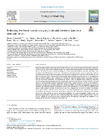Evaluating five forest models using multi-decadal inventory data from mountain forests
dc.contributor.author
Irauschek, Florian
dc.contributor.author
Barka, Ivan
dc.contributor.author
Bugmann, Harald
dc.contributor.author
Courbaud, Benoît
dc.contributor.author
Elkin, Ché
dc.contributor.author
Hlásny, Tomáš
dc.contributor.author
Klopčič, Matija
dc.contributor.author
Mina, Marco
dc.contributor.author
Rammer, Werner
dc.contributor.author
Lexer, Manfred J.
dc.date.accessioned
2022-12-01T10:28:40Z
dc.date.available
2021-03-13T04:35:25Z
dc.date.available
2021-03-15T11:39:20Z
dc.date.available
2022-12-01T10:28:40Z
dc.date.issued
2021-04-01
dc.identifier.issn
0304-3800
dc.identifier.issn
1872-7026
dc.identifier.issn
0167-8892
dc.identifier.other
10.1016/j.ecolmodel.2021.109493
en_US
dc.identifier.uri
http://hdl.handle.net/20.500.11850/474253
dc.identifier.doi
10.3929/ethz-b-000474253
dc.description.abstract
Forest ecosystem models, being widespread science tools and used for forest management decision support are usually evaluated individually against field data sets, while model intercomparison and joint evaluation studies are rare. We tested five forest models according to a harmonized protocol against data from nine forest compartments in the Snĕžnik region, in Slovenia. The suite of models included stand- and landscape-scale, empirical- and process-based models used across Europe. The test dataset originated from inventory data covering 50 years (tree measurements 1963, 1983 and 2013) and included annual harvesting records at tree level. Uncertainties in data and forest conditions were considered by defining 12 scenarios varying initial regeneration, browsing pressure and harvest modalities. We evaluated the models` ability to initialize forest conditions accurately, whether management interventions could be implemented based on harvest records, and how well basal area and diameter structure could be predicted. Simulation results for basal area development showed good to satisfactory performance for all models, at which SAMSARA2, SIBYLA and PICUS showed the best agreement. Comparison of simulated and observed diameter distributions showed good performance of ForClim, PICUS, SAMSARA2 and SIBYLA. Model output variability was between 6% and 24%, indicating the relevance to consider uncertainties that can be attributed to specific sources. There was no clear hierarchy between more empirical or more process-based models regarding accuracy of stand development projections. The cohort-based landscape model LandClim showed the lowest stand-level accuracy and scenario sensitivity, but results nevertheless qualified it for complementary application at landscape scale. Within individual-based models, spatially explicit models seemed to be more suitable for heterogeneous mixed mountain forests. The findings demonstrated the usefulness of inventory datasets for model testing and intercomparison.
en_US
dc.format
application/pdf
en_US
dc.language.iso
en
en_US
dc.publisher
Elsevier
en_US
dc.rights.uri
http://creativecommons.org/licenses/by/4.0/
dc.subject
Model intercomparison
en_US
dc.subject
Tree growth
en_US
dc.subject
Tree mortality
en_US
dc.subject
Forest management
en_US
dc.subject
Ungulate browsing
en_US
dc.subject
Forest inventory data
en_US
dc.title
Evaluating five forest models using multi-decadal inventory data from mountain forests
en_US
dc.type
Journal Article
dc.rights.license
Creative Commons Attribution 4.0 International
dc.date.published
2021-03-03
ethz.journal.title
Ecological Modelling
ethz.journal.volume
445
en_US
ethz.journal.abbreviated
Ecol. Model.
ethz.pages.start
109493
en_US
ethz.size
11 p.
en_US
ethz.version.deposit
publishedVersion
en_US
ethz.identifier.scopus
ethz.publication.place
Amsterdam
en_US
ethz.publication.status
published
en_US
ethz.leitzahl
ETH Zürich::00002 - ETH Zürich::00012 - Lehre und Forschung::00007 - Departemente::02350 - Dep. Umweltsystemwissenschaften / Dep. of Environmental Systems Science::02722 - Institut für Terrestrische Oekosysteme / Institute of Terrestrial Ecosystems::03535 - Bugmann, Harald / Bugmann, Harald
en_US
ethz.leitzahl.certified
ETH Zürich::00002 - ETH Zürich::00012 - Lehre und Forschung::00007 - Departemente::02350 - Dep. Umweltsystemwissenschaften / Dep. of Environmental Systems Science::02722 - Institut für Terrestrische Oekosysteme / Institute of Terrestrial Ecosystems::03535 - Bugmann, Harald / Bugmann, Harald
ethz.relation.isReferencedBy
10.3929/ethz-b-000582961
ethz.date.deposited
2021-03-13T04:35:31Z
ethz.source
SCOPUS
ethz.eth
yes
en_US
ethz.availability
Open access
en_US
ethz.rosetta.installDate
2021-03-15T11:39:31Z
ethz.rosetta.lastUpdated
2023-02-07T08:10:59Z
ethz.rosetta.versionExported
true
ethz.COinS
ctx_ver=Z39.88-2004&rft_val_fmt=info:ofi/fmt:kev:mtx:journal&rft.atitle=Evaluating%20five%20forest%20models%20using%20multi-decadal%20inventory%20data%20from%20mountain%20forests&rft.jtitle=Ecological%20Modelling&rft.date=2021-04-01&rft.volume=445&rft.spage=109493&rft.issn=0304-3800&1872-7026&0167-8892&rft.au=Irauschek,%20Florian&Barka,%20Ivan&Bugmann,%20Harald&Courbaud,%20Beno%C3%AEt&Elkin,%20Ch%C3%A9&rft.genre=article&rft_id=info:doi/10.1016/j.ecolmodel.2021.109493&
Files in this item
Publication type
-
Journal Article [128832]

